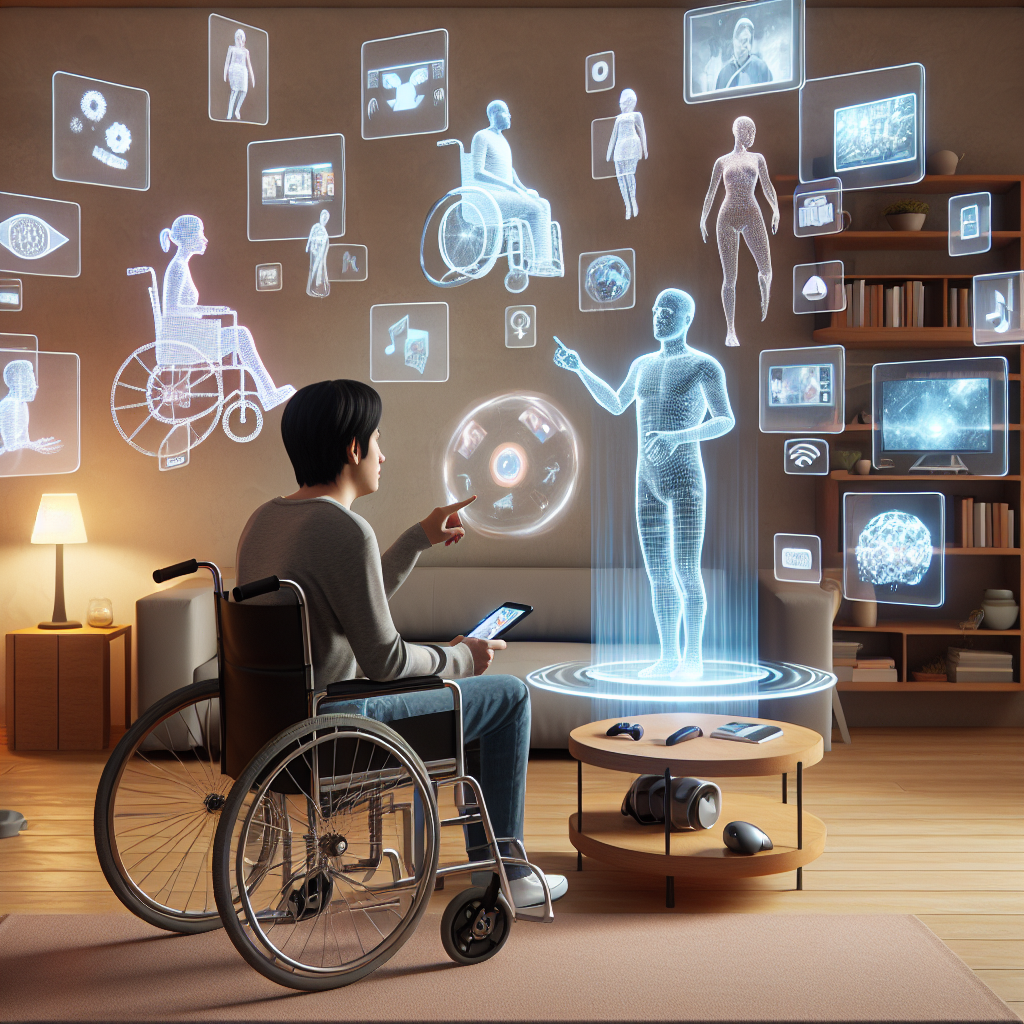In recent years, advancements in artificial intelligence (AI) technology have made significant strides in improving accessibility for people with disabilities in the entertainment industry. From closed captioning and audio description to voice recognition and gesture control, AI has the potential to revolutionize the way people with disabilities experience and enjoy entertainment content.
One of the key ways in which AI is improving accessibility in entertainment is through the use of closed captioning. Closed captioning uses AI technology to automatically transcribe spoken dialogue and sound effects into text that appears on the screen. This allows people who are deaf or hard of hearing to follow along with the dialogue and storyline of a movie or TV show without missing any important information. In addition, AI-powered closed captioning can also provide more accurate and timely captions than traditional methods, making the viewing experience more enjoyable for everyone.
Another way in which AI is enhancing accessibility in entertainment is through the use of audio description. Audio description uses AI technology to provide spoken narration of key visual elements in a movie or TV show for people who are blind or visually impaired. This narration describes important details such as characters, settings, and actions, allowing individuals with visual disabilities to fully engage with the content and follow the story. AI-powered audio description can also adapt to the pace of the dialogue and provide more personalized descriptions based on the user’s preferences, making the experience more immersive and enjoyable.
Voice recognition technology is another area where AI is making a significant impact on accessibility in entertainment. Voice recognition allows people with mobility impairments to control their entertainment devices using voice commands, eliminating the need for physical buttons or controls. This technology enables individuals with disabilities to easily navigate through menus, search for content, and adjust settings without having to rely on traditional remote controls or touchscreens. AI-powered voice recognition can also learn and adapt to the user’s speech patterns and preferences over time, making the experience more intuitive and user-friendly.
Gesture control is another emerging technology that is being used to improve accessibility in entertainment for people with disabilities. Gesture control uses AI algorithms to track and interpret hand movements and gestures, allowing users to interact with their devices through simple gestures such as waving, pointing, or swiping. This technology is particularly beneficial for individuals with mobility impairments who may have difficulty using traditional input methods such as keyboards or touchscreens. AI-powered gesture control can also be customized to recognize specific gestures or movements based on the user’s needs and preferences, making it a versatile and adaptable solution for enhancing accessibility in entertainment.
Overall, AI technology has the potential to greatly improve accessibility in the entertainment industry for people with disabilities by providing innovative solutions that address a wide range of accessibility challenges. From closed captioning and audio description to voice recognition and gesture control, AI-powered tools are making it easier for individuals with disabilities to access and enjoy entertainment content in a more inclusive and engaging way.
FAQs:
Q: How is AI technology being used to improve accessibility in entertainment for people with disabilities?
A: AI technology is being used in various ways to enhance accessibility in entertainment, including closed captioning, audio description, voice recognition, and gesture control. These AI-powered tools help individuals with disabilities to access and enjoy entertainment content in a more inclusive and engaging way.
Q: What are some of the benefits of using AI technology for accessibility in entertainment?
A: Some of the benefits of using AI technology for accessibility in entertainment include more accurate and timely closed captioning, personalized audio description, intuitive voice recognition, and versatile gesture control. These technologies make it easier for individuals with disabilities to engage with entertainment content and have a more enjoyable viewing experience.
Q: How can AI technology help individuals with mobility impairments to access entertainment content?
A: AI technology such as voice recognition and gesture control can help individuals with mobility impairments to access entertainment content by allowing them to control their devices using voice commands or hand gestures. This eliminates the need for physical buttons or controls and provides a more intuitive and user-friendly way to interact with entertainment devices.
Q: Are there any limitations to using AI technology for accessibility in entertainment?
A: While AI technology has made significant advancements in improving accessibility in entertainment, there are still some limitations to consider. For example, AI-powered tools may not always provide 100% accuracy in closed captioning or audio description, and some individuals with disabilities may have specific needs or preferences that may not be fully addressed by current AI solutions. However, ongoing research and development in this area are helping to overcome these limitations and improve the overall accessibility of entertainment content for people with disabilities.

